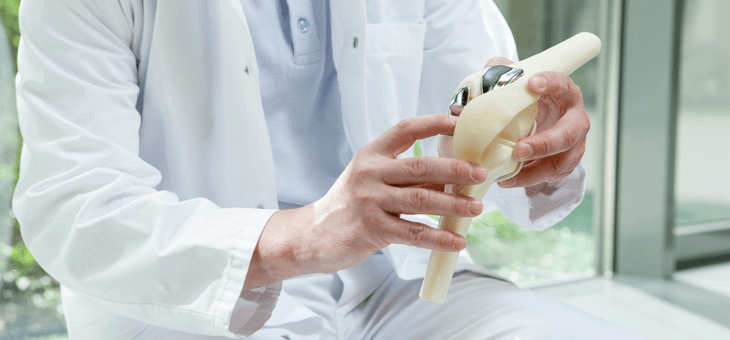Painful and expensive prosthetic knee replacements could become a thing of the past thanks to some clever medical engineering and help from a very surprising body part.
Do you have bad knees? It may be due to an old sports injury or a drunken misadventure, but for many of us, dodgy knees are a daily struggle that only seems to worsen as we age.
For such an important joint that’s crucial to our mobility and quality of life, our knees are surprisingly susceptible to injury from everyday twisting and straining.
Statistics from the Australian Institute of Health and Wellbeing (AIHW) show just over 50,000 people per year in Australia require knee replacements due to osteoarthritis. This is when the protective cartilage that works as a buffer between your upper and lower leg bones wears away leaving the bones to grind together.
Read: Easing painful hips and knees
“Osteoarthritis symptoms can usually be managed, although the damage to joints can’t be reversed. Staying active, maintaining a healthy weight and receiving certain treatments might slow progression of the disease and help improve pain and joint function,” the Mayo Clinic reports.
As time goes on, the damage worsens and eventually the cartilage breaks down completely. It’s at this point that most people consider a knee replacement. The procedure involves removing any remaining cartilage and some bone within the knee joint and replacing it with metal components that recreate the joint.
These artificial joints are effective, but have a limited life span and the surgery can be expensive.
But what if there was a way to do away with prosthetic knee replacements entirely? Scientists at the University of Basel believe they have found a way to repair the damaged cartilage using cells taken from a surprising place – your nose.
In a new paper, researchers demonstrated that cultivated cartilage cells taken from a patient’s nasal septum could be used to grow a cartilage layer that was then surgically implanted into the knee joint. The procedure was initially tested on sheep before being performed on two humans.
Read: Six major causes of knee pain
“Following the implantation of the cartilage engineered from the patients’ own nasal cartilage cells, the two subjects reported a reduction in pain and increased quality of life,” researchers said in a statement.
“In one of the two patients, the researchers were also able to determine via MRI images that the bones in the knee joint were further apart than previously – an indication of the joint’s recovery.”
Not only did the procedure repair the damaged cartilage, but the grafts appeared to be resistant to inflammation – the major source of the actual pain felt in the knee.
“The results of the animal experiments were encouraging. Not only did the tissue engineered from nasal cartilage cells prove to be extremely robust, it also seemed to counteract the inflammatory reactions,” the researchers say.
Lead researcher Professor Ivan Martin says cells from the nasal cartilage were selected over other sources of cartilage (including the knee itself) because of their innate ability to regenerate.
Read: Lower your risk of osteoarthritis
“Unlike the cartilage tissue in the joints, these cartilage cells originate from precursor cells of the neuroectoderm and therefore have a distinct regenerative and adaptive capacity,” Prof. Martin says.
“Tissue grown from nasal cartilage cells seems also to retain these special properties.”
The breakthrough could open up a whole new method of treating a problem that is common to many Australians.
“Our results have enabled us to lay the biological foundation for a therapy, and we are cautiously optimistic,” Prof. Martin says.
Do you suffer from knee pain? Have you had a knee replacement? Was it successful? What could a treatment like this mean for your quality of life? Let us know in the comments section below.
If you enjoy our content, don’t keep it to yourself. Share our free eNews with your friends and encourage them to sign up.

